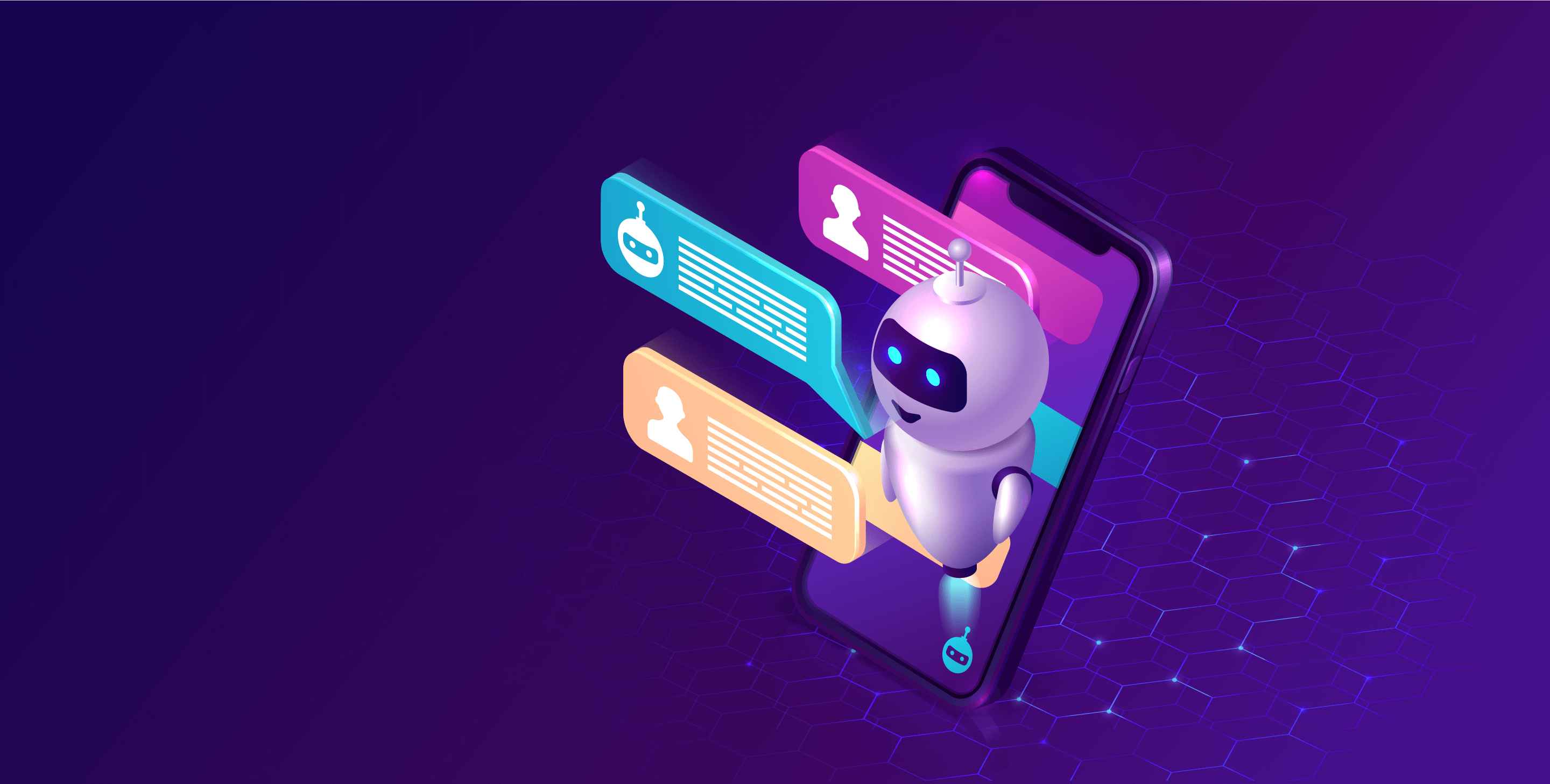Smart Q&A Bot for FAQs – Support and More

AI chatbots are considered an effective and revolutionary tool for improving customer support. In this article, we'll look at the benefits and process of creating an AI FAQ bot and discuss the role of GPT.
About the Concept, Purpose and Advantages of an AI Chatbot
A chatbot is a computer program that simulates a human conversation in the current moment. They provide instant answers to user questions, improve customer service, and reduce the workload of the support team.
Clients interact with the chatbot by sending text or voice requests. Based on past interactions, the chatbot learns and improves the quality of its responses.
Due to their effectiveness, chatbots have become an indispensable part of modern business:
- Chatbots have the advantage of immediacy, providing instant answers to users at any time of the day, which is especially important for global or time zone-distributed companies.
- Automation of chatbots can significantly reduce the burden on technical support, providing quick and effective solutions to frequently encountered user questions without the need to involve human team.
- The machine learning at the heart of chatbots allows them to continually improve by adapting to new queries and updates, making them a powerful tool for continuously improving the customer experience.
What is the Algorithm of the AI bot?
The chatbot uses natural language processing and machine learning to understand the search context, find meaning, and generate an appropriate response. The chatbot generates a response in three stages:
- Understanding the user's request using NLP. At this stage, the bot analyzes the text of the user's request using natural language processing (NLP) methods, which allows it to understand exactly what the user wants to know or do. This stage includes keyword extraction, syntax analysis, intent detection, and Entity Recognition such as dates, names, locations, and other important query elements.
- Generating a response. Once the user's intent is determined, the bot moves to the response generation stage. Here, the bot can use predefined response templates or create new responses based on its training. Bot can be pre-trained on large amounts of data to better understand and generate human-like responses. The important thing is to maintain the context and purpose of the dialogue for a better user experience.
- Providing a response to the user. The generated response is displayed to the user in an easy-to-read format. The answer must be clear, understandable, and meet the user's expectations. The bot can also clarify details, ask clarifying questions, or provide additional information in response to a user request.
These steps together allow you to create an AI chatbot hat can communicate with users in natural language and provide them with the information or help they need.
Application Areas of AI Chatbots
Chatbots are used in various fields and areas. Here are some examples of their use:
Customer service and e-commerce. Chatbots are used to handle customer queries, suggest products based on customer preferences and purchase history, help resolve problems, and provide updated shipping information.
Healthcare. Chatbots can provide information about symptoms and treatment, reminders to take medications, and make an appointment for an in-person appointment or an online consultation with a doctor.
Banking sector. Chatbots can provide information about banking services, assist with transactions, track expenses, and provide advice on financial management.
Tourism. Chatbots help plan trips, book hotels and tickets, and provide information about attractions.
These are just a few examples, and the use of chatbots continues to expand across various industries as technology and the way it is used evolve.
How to Plan and Design an AI Chatbot?
The applications of AI bots in the real world are limitless, and the applications will expand even further as they continue to develop. The process involves planning and designing the AI bot, developing it using generative pre-trained transformer (GPT) technology, and finally testing it.
Overall, effective bot development requires careful analysis and planning. Consider the needs and expectations of your target audience, and your bot will be more successful in achieving your goals. It is best to follow the following steps.
Defining your Target Audience. This is a really key step. It is important to do your research and determine the demographics, interests, needs, and concerns of your target audience. This will help create a more efficient bot that can solve their problems.
Bot Goals. You correctly pointed out that it is important to define what specific goals you want to achieve with the bot. For example, this could be automating answers to frequently asked questions, increasing conversions, or reducing support wait times.
Platforms. Integrating your bot into different platforms can be very useful. However, it is also important to consider that each platform may have its own characteristics and limitations. Consider which platforms are most popular among your target audience.
Bot Personality. Defining your bot's personality is important to creating a consistent and recognizable identity. Personality can depend on the nature of your brand and the expectations of your audience. For example, a bot can be friendly, professional, or humorous, depending on the context.
Scheduling the Conversation. This is an important step to ensure effective communication. Developing dialogue scripts and apreliminary consideration of possible questions and answers will help the bot be prepared for various situations. Using natural and understandable language will also make the bot more attractive to users.
Using GPT technology when creating an AI Chatbot
GPT technology makes the AI bot powerful, smart, and reliable. So that's a good reason to get a ChatGPT. While this may be difficult for those unfamiliar with the code, keep in mind that patience and persistence are key, and the results will definitely be appreciated for your time and effort.
- Development environment. Creating a project workspace is an important first step. This includes defining project goals, choosing development tools, and creating a directory structure. Installing software and libraries is also critical. This may include installing machine learning frameworks, natural language libraries (NLP), and other things.
- Selecting the GPT model version. OpenAI provides different versions of GPT models, each with specific characteristics. The choice of model depends on the requirements of the project, available resources (time, computing power), and the final purpose of using the bot.
- Bot training. This stage involves transferring an extensive information database to the model. This training can be done at various iteration stages to improve the quality of the bot's responses. It is important to note here that training should include a variety of data so that the bot is able to adequately respond to various requests.
- Implementation of a bot. After successfully training the bot, it is ready for implementation. This may include integrating the bot with your chosen platform, for example, via an API. Testing your bot in real-world conditions is also important to identify and fix potential problems.
- Patience and persistence. Developing and training an AI bot is a process that requires time and effort. It is important to maintain patience, especially when difficulties or unexpected problems arise. Constantly improving and updating the bot is also key to ensuring it remains relevant and effective.
AI Chatbot Testing
Implementing and testing artificial intelligence (AI) in the form of a bot is an important stage in development, requiring a systematic approach to ensure effective operation and interaction with users.
Before the bot is launched into the target environment, it is necessary to conduct thorough testing of the functionality, trained models, and overall performance.
Functional testing involves testing the bot's basic operations, such as understanding requests, generating responses, and processing commands. At the same stage, testing for negative scenarios is carried out to ensure that errors and unforeseen situations are handled correctly.
Performance testing is aimed at assessing the speed of the bot under various loads. It is important to make sure that the bot is able to process requests in real time and does not lose performance under increased activity.
After successful functional and production testing, the AI bot is integrated into the target environment, where its interaction with other systems and applications is tested. Security testing must also be carried out to ensure data protection and prevent possible threats.
Along with testing, it is important to train the bot in real-world conditions so that it can learn to adapt to the user experience and improve its performance over time.
After completing all stages of testing and gaining confidence in the stable operation of the bot, its implementation occurs. At this stage, it is important to provide user support and monitoring of the bot’s performance in order to quickly respond to emerging problems and update AI models to optimize its operation.
Implementing an AI bot is a continuous improvement process to ensure effective user interaction and compliance with changing requirements.
Conclusion
The adoption of AI bots in the niche industry is expected to increase as these chatbots are demonstrating their usefulness in various sectors such as customer service, healthcare, and e-commerce.
As tools like ChatGPT continues to evolve and new versions appear, the capabilities of bots will increase several times. The future of online chatbots seems promising, with the potential to revolutionize many sectors. This is a long and difficult path leading to revolutionary results.
